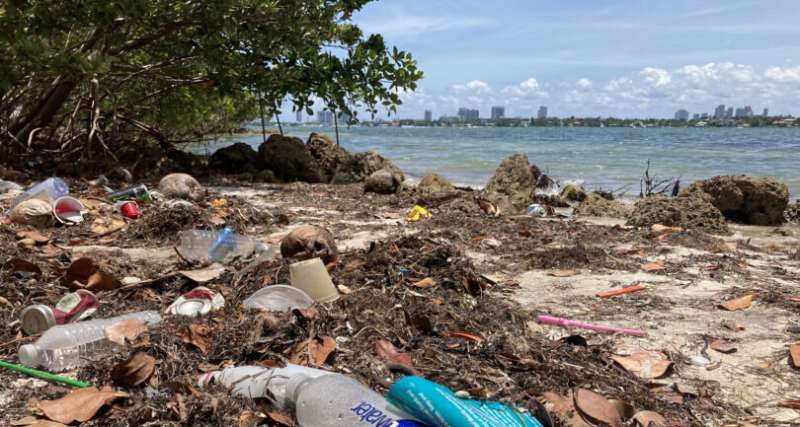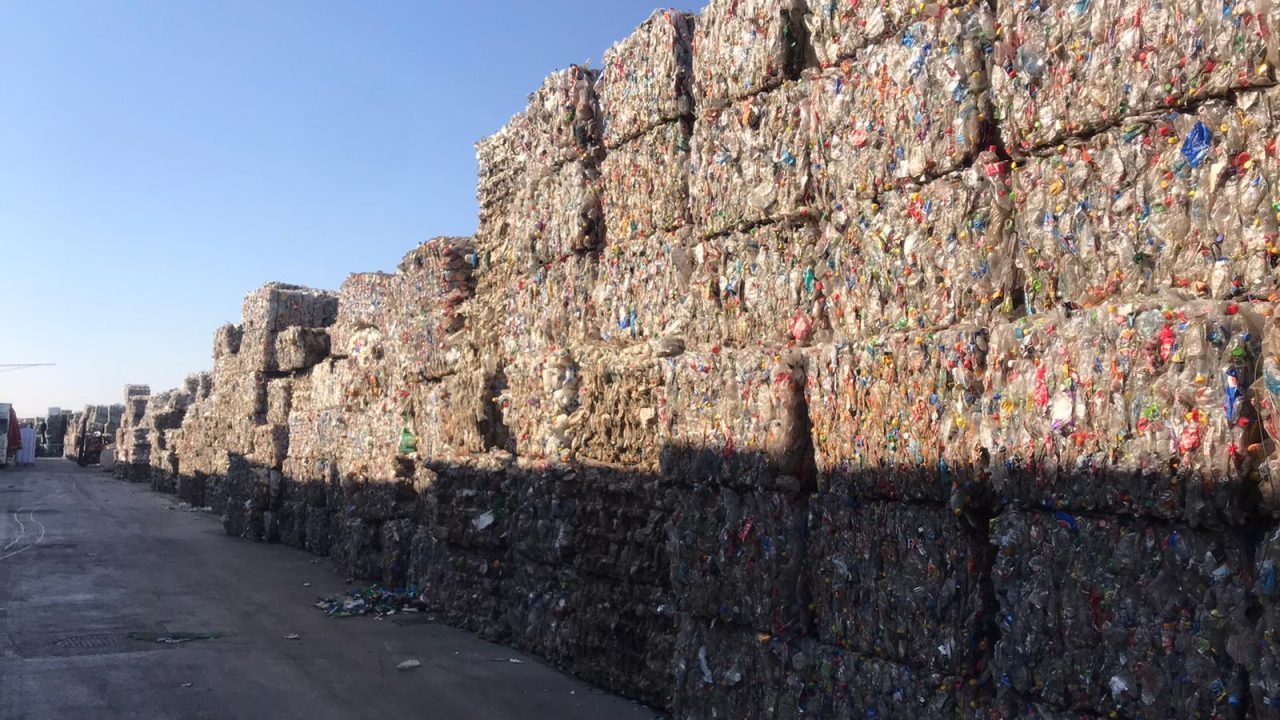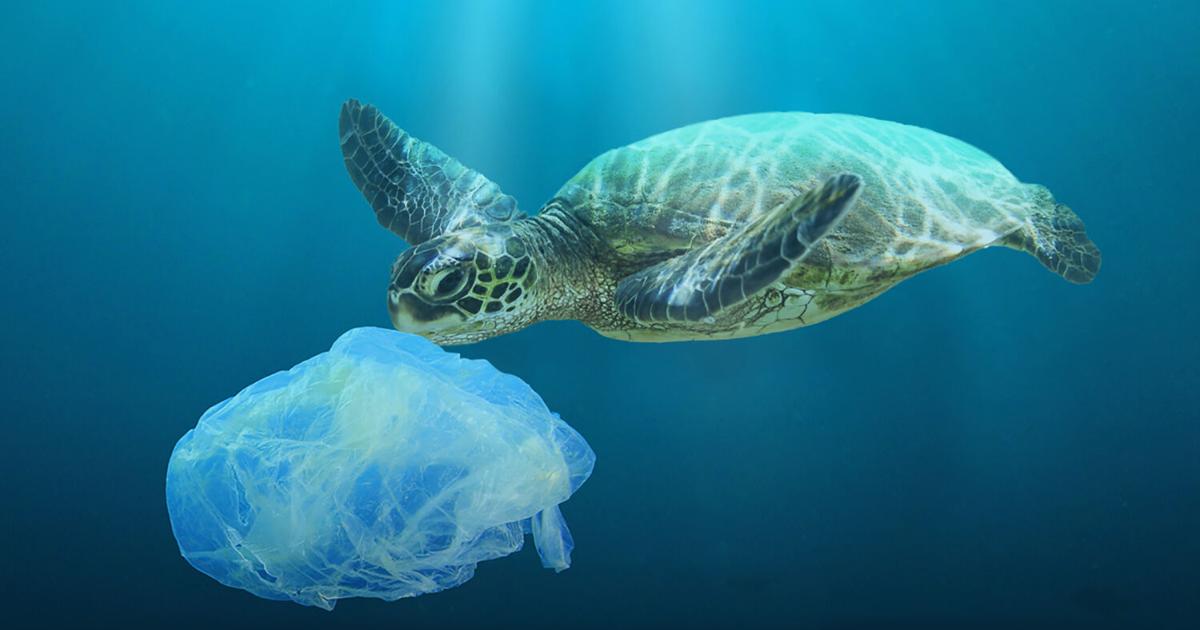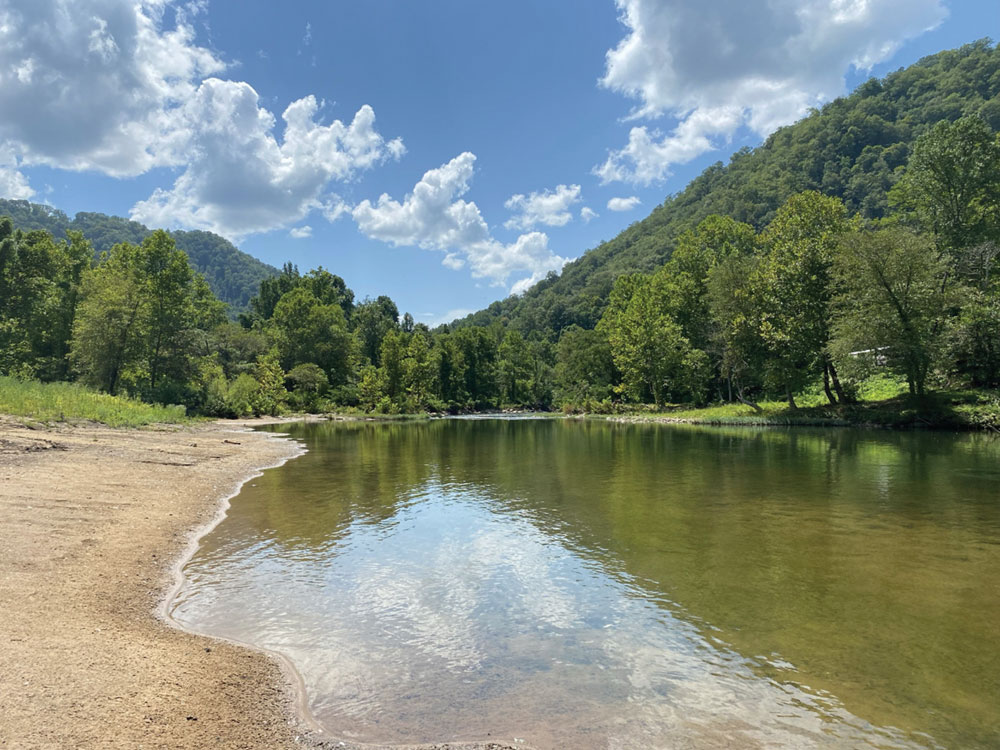The amount of plastic traded between countries has the carbon footprint of a mid-sized European country, according to a new study from the University of Pittsburgh.
Almost half of all plastics are traded across international borders – usually from oil- and gas-producing countries to those with big manufacturing sectors, like China.
Oil and gas are harvested and refined to make that plastic. The study found that internationally-traded plastics created 350 million metric tons of carbon dioxide – about the same footprint as France or Italy.
“This is a huge problem,” said Vikas Khanna, associate professor of civil and environmental engineering at the University of Pittsburgh, and the study’s lead author. “But at the same time, it’s a huge opportunity.”
Better recycling could lower that footprint, to promote a “circular” economy, Khanna said. Only around 9 percent of all plastics are recycled.
Opportunities to reduce plastic
By 2050, plastics are on track to account for 15 percent of all global greenhouse gases. Scientists say lowering our greenhouse gas emissions is imperative to limiting the worst effects of climate change.
Khanna said most recycling now is a form of “downcycling,” where materials like plastic bottles are repurposed as lower-grade materials.
“Maybe you shred it into smaller particles and it may become fillers for something else,” Khanna said.
He said chemical recycling, where plastics are broken down into their building blocks, is one way to keep more virgin plastics out of landfills and the environment. A plastic bottle can then become…another plastic bottle.
“That way, we’re not losing the value, we’re recovering the building blocks” of the material, Khanna said.
Khanna said for that to happen, there will need to be government action to fund research and offer incentives for companies to improve recycling techniques.
“Right now, I think there’s a lack of incentives and there’s no policies, at least in the U.S.,” Khanna said. Those policies are starting to take hold in Europe in other countries, he said.
In addition to greenhouse gases, plastics pose other problems. Scientists estimate around 10 million metric tons of plastic end up in the ocean every year, and microplastics – tiny particles that escape into the environment as materials degrade–have been found in Arctic ice, the Mariana Trench, and in baby feces.
Video: As the World Grapples with Plastic Pollution, Pa.’s Ethane Cracker Promises More Plastic
The study found that since a handful of countries, like the U.S., China, Saudi Arabia and Germany are responsible for the majority of plastics trade, policies in just a few countries could have a big impact on reducing plastic waste. Improving worldwide recycling practices “may only require interventions in a few key countries,” the authors state.
Make producers responsible for plastic waste
Daniel Posen, assistant professor in civil and mineral engineering at the University of Toronto, who was not involved in the study, said there’s no silver bullet to solving the world’s plastics problem.
He said one potential part of the solution is to cut down on the circulation of plastics by banning some single-use plastics – like shopping bags and utensils – as many countries around the world have begun doing.
Another possible solution is a regulatory concept, also gaining popularity in Europe, of “extended producer responsibility,” which places the onus on companies – rather than local governments and consumers – on ensuring plastics are properly disposed of.
“As soon as you flip the responsibility, it’s no longer on the consumer or on governments to deal with it but on you as a company,” Posen said. “If you are responsible as a company for proper disposal, you are going to design a product that is much easier to be disposed of.”
Following Pennsylvania Gas to Scotland
This story is produced in partnership with StateImpact Pennsylvania, a collaboration among The Allegheny Front, WPSU, WITF and WHYY to cover the commonwealth’s energy economy.









